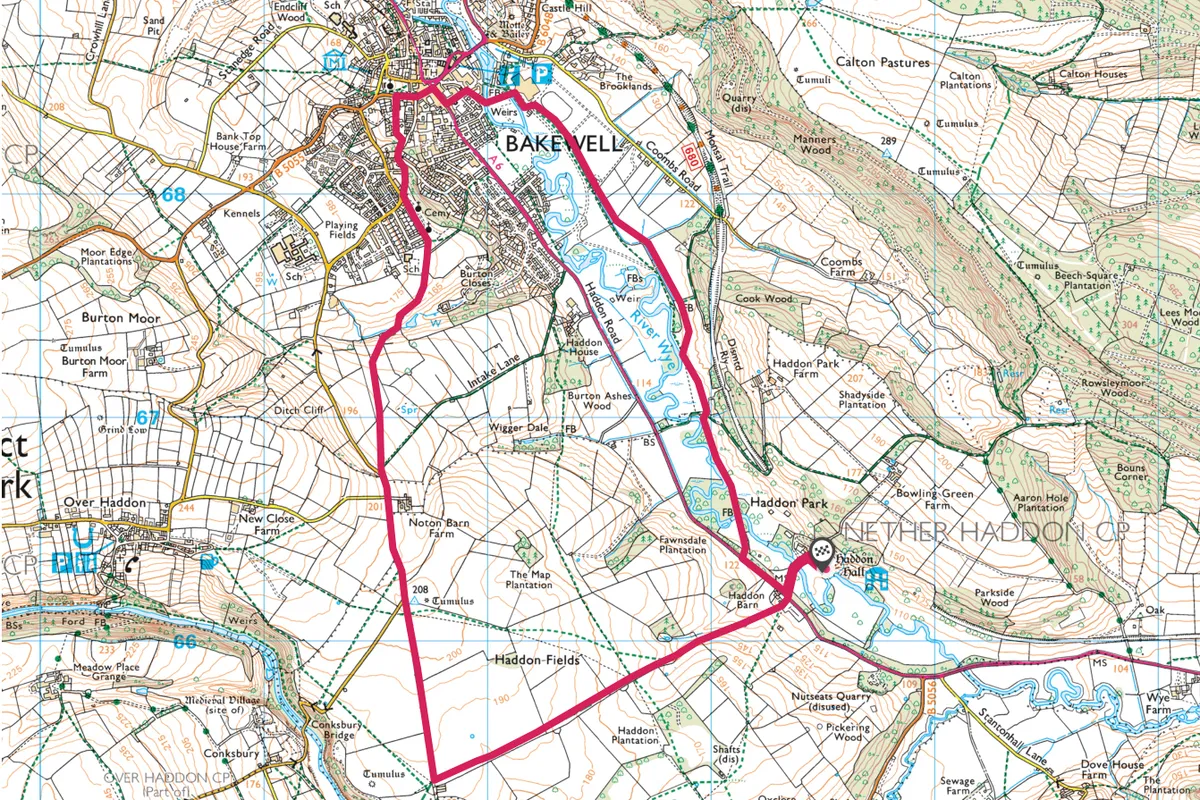Enjoy a day out this Christmas at Haddon Hall in the Peak District National Park.
Follow the bridge over the River Wye and climb to the hefty arched doorway of Haddon Hall. Step inside the courtyard with its great stone slabs. Feel the weight of 900 years of history in the locally quarried grit and limestone and the solid native oak used to create this largely unaltered medieval house.
When the family walked away from Haddon Hall in favour of Belvoir Castle in the 1700s, they left unloved furnishings to gather dust and worms for 200 years. Many of these pieces remain, and now the Hall’s collection of early Tudor furniture is regarded as one of the finest.
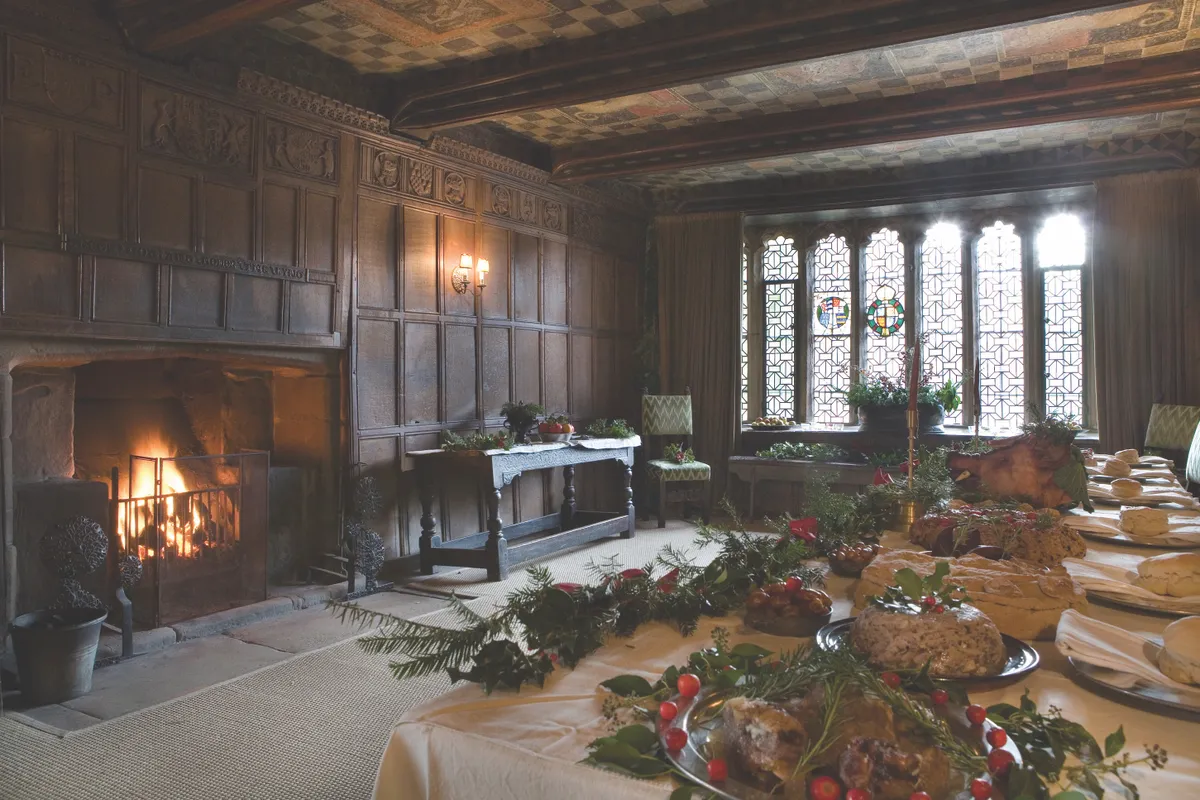
Haddon is an atmospheric place, with the wind whipping across the courtyard and whispering down stone-floored corridors. But come Christmas, the medieval austerity of Haddon is softened. Garlands hang from ceilings and doors, tables are decorated with wreaths, oranges and candles, and a fire roars in the hearth. Christmas trees twinkle with fairy lights and the scent of pine wafts through the house.
As well as an artisan market from 17–19 November, the house leaps to life with seasonal storytelling, Christmas craft-making, candlelit tours and festive food in December. Community choirs and bell-ringers fill the Banqueting Hall with joyous music daily.
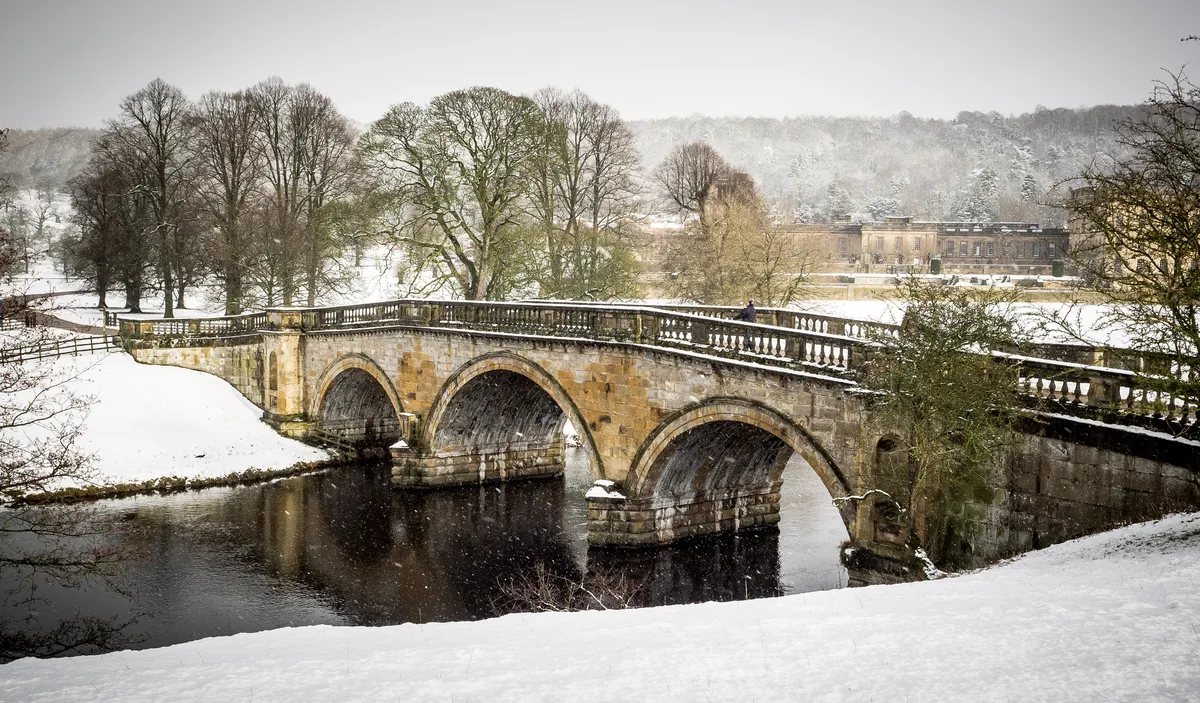
Haddon spills over with Victorian Christmas traditions, but to experience the ghostly ambience of Dickens’ Christmas Carol, tiptoe into the chapel, where candlelight glows on the peeling walls. Look more closely at the three figures, faintly visible on the wall. Last century, these three murdered kings were rediscovered in the crumbling whitewash. Their story is a memento mori, a warning to the medieval aristocracy to look after its peasants, because – rich or poor – everyone shares the same end.
Leaving the manor house behind, you can follow the meandering River Wye to Bakewell for more seasonal delights at All Saints Church, with its Christmas Tree Festival, and to pay homage to the Haddon Hall family in the Vernon Chapel.
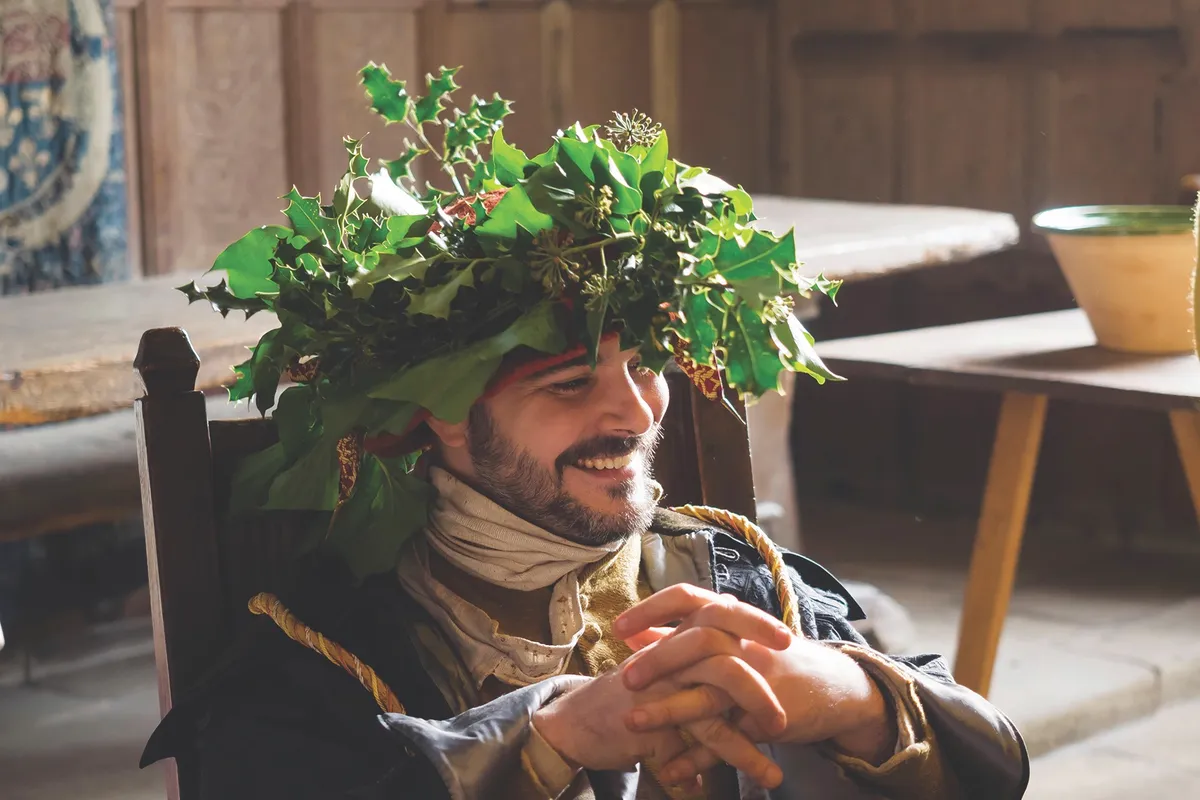
1. Along the Wye
Back at the A6, turn right, looking out for a gap in the wall and hedge a short way along. Go through it and follow the path along the metal fence of the Haddon parkland. Cross the narrow footbridge spanning the Wye, then take the path through woodland and floodplains until you reach a farm track. Be warned, the path can be very muddy after periods of heavy rain.
This is a delightful walk along the River Wye as it turns and loops back on itself, creating oxbow lakes in places. Look out for both rainbow and brown trout in the river’s depths.
Cross the farm track and continue on across meadows, keeping left until you reach Agricultural Way in Bakewell. Walk its grassy verge to Bakewell Agricultural Business Centre with its six brilliant-white domes. Take the path opposite the centre, where a fingerpost points the way to the town’s centre.

2. Town amble
Pause at the Bakewell Love Locks Bridge to view the river activity, the weirs crowded with swans, Canada geese and mallards. Head through the town, decorated for Christmas with evergreen trees angled over shopfronts, their window displays stacked with tempting Christmas wares. Grab lunch at one of the town’s cosy cafés, or a coffee with the obligatory Bakewell pudding, before continuing up Church Street to All Saints Church.
In the welcoming quietness of Vernon Chapel, there are imposing memorials and chest tombstones to the Vernon and Manners family of Haddon Hall. Look out for the monument to John Manners and Dorothy Vernon, who allegedly eloped after a row broke out because the Manners were Protestant and the Vernons Catholic. Unlike Romeo and Juliet, the romantic tryst had a happy ending: Dorothy reconciled with her family and inherited the vast estate in 1565.
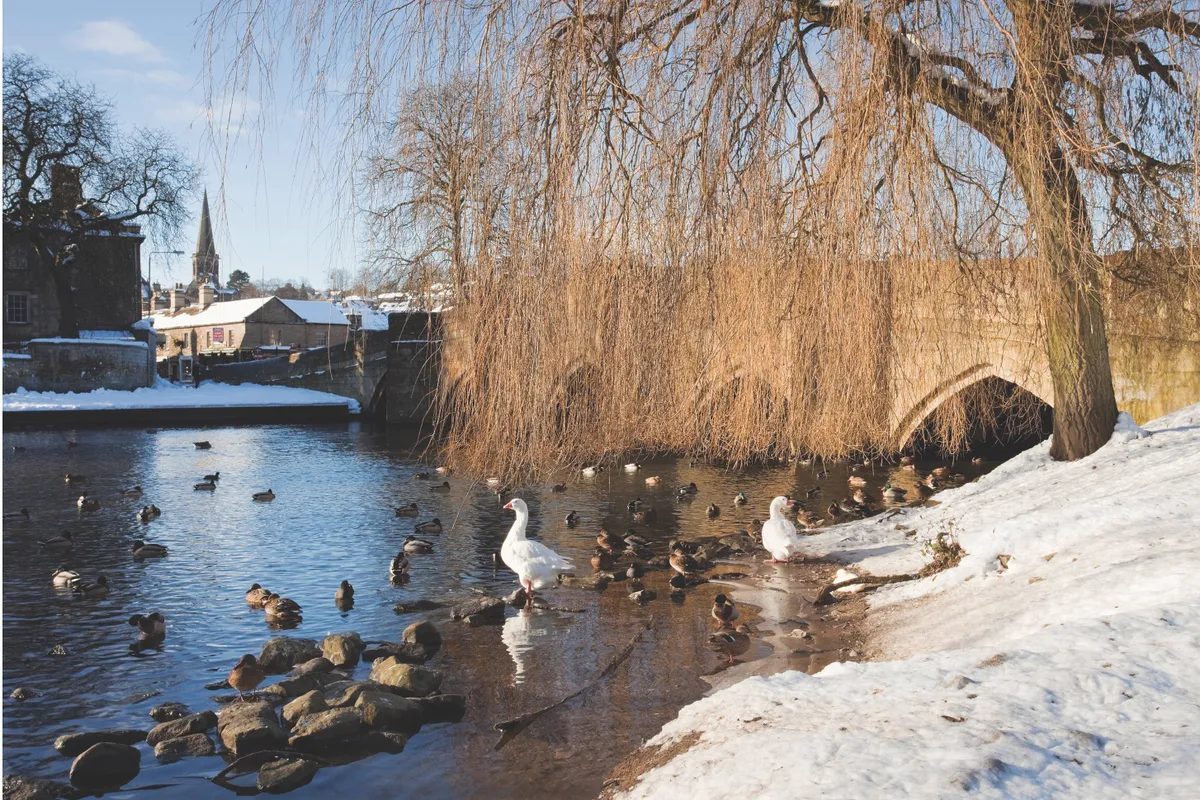
Having paid homage to Haddon Hall’s illustrious family, step into the main body of the church, where Christmas trees line the aisles and cram the transepts and a rainbow of fairy lights fills the dimly lit church. The trees are imaginatively decorated by various Bakewell communities and charities. You can enjoy this festive spectacle from 12–22 December.
3. Historic Bakewell
Before leaving the church, pause in the south entrance where so much history is casually stacked in the tiny space. The carved masonry represents several tribal lands that converged in Bakewell during the Middle Ages: sculpted creatures typical of the Mercians; vine scrolls from the Anglian Northumbrians; Celtic interlay from the Norse Vikings, and weave patterns from the Danes.
Cross the churchyard and down steps back on to Church Street. Directly opposite is Butts View. Walk up the narrow road of charming honey-toned houses and cut through woodland to leafy Butts Road, a quiet no-through lane that leads on to Yeld Road for pedestrians. Turn left and left again on to Burton Edge, following the road beside Bakewell Cemetery and Catcliff Wood.
4. Above the valley
Where Burton Edge turns right, continue straight on, along a farm track and out into the countryside with glorious views over undulating meadows to the Wye Valley, Manners Woods and the moorland beyond.
Continue across meadows until the track meets a road. Turn left and follow the country lane a short distance. Where the road veers right, keep straight on, following the fingerpost down an unmade farm track. Just before the farm, turn left to tumble down through Haddon Fields, with fine views over to one of England’s most romantic manor houses, and into the car park at Haddon Hall.
Map
Click on the map below for an interactive version of the route.
